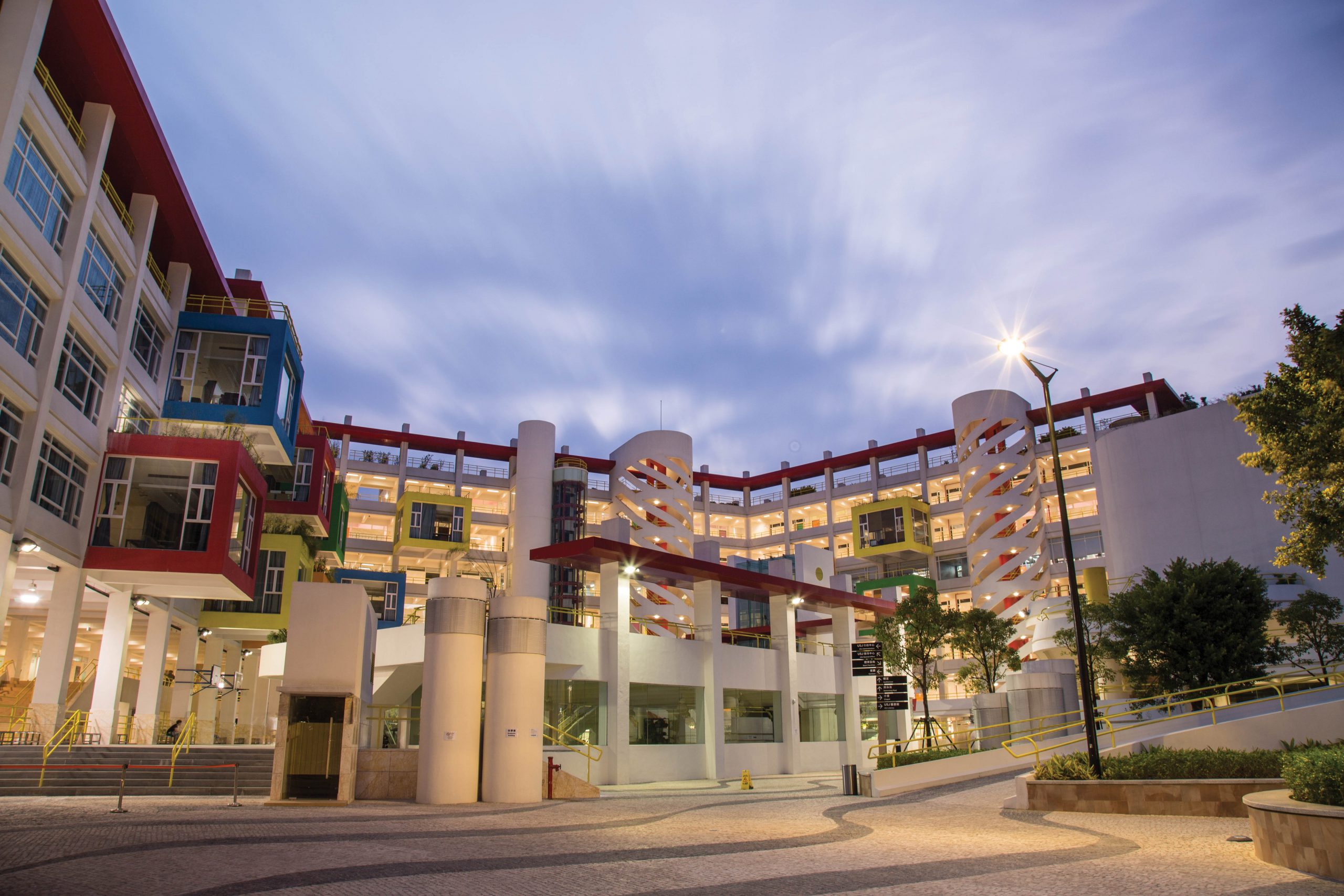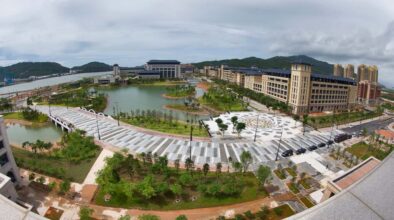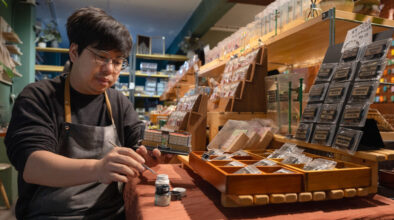TEXT Rafelle Marie Allego and Kary Lam
We’ve learned that Macao has been an educational powerhouse for hundreds of years. But what’s next? What’s in store for the city’s education system of the future and how will it help produce the leaders of tomorrow?
Macao’s education system has undergone great changes over the years, from the first school established by Jesuit missionaries in 1594 to today’s 77 schools spread throughout the city. But what does the future look like? As the city’s education system has rapidly risen up the rankings over the decades, what great changes are expected over the next few years and beyond?
Before we look at that, though, it’s important to outline where Macao’s education system stands right now. In the 2018/19 academic year – the last year on record with full data for the whole education system – there were a total of 113,285 pupils and students attending all the education institutions in the city, from kindergarten – also known as ‘infant education’ in Macao – to university. Based on last month’s projected 2020/21 statistics from the Education and Youth Affairs Bureau (DSEJ) ahead of schools returning this month, there are an estimated 85,014 pupils in public and private schools in the city. That’s around 12.4 per cent of the total population of 685,400, meaning that more than one in 10 people in Macao is a kindergarten, primary or secondary school pupil.
There are far fewer tertiary students – those in higher education after leaving secondary school – in Macao. Based on 2019/20 statistics from the Higher Education Bureau (DSES), a total of 15,969 people from Macao study at local higher education institutions, which translates to about 2.33 per cent of the city’s total population. Many locals who graduate from secondary school in the SAR head to the Mainland or overseas to continue their education. According to 2018/19 data, a total of 12,353 locals study in the world’s top 500 universities. And interestingly, also according to data from the same academic year, there were more non-local students studying in Macao than locals, with 20,138 non-local students enrolled in Macao’s tertiary education system. In total, that means there were 36,107 people studying at all of the higher education institutions in the city in the 2018/19 academic year.
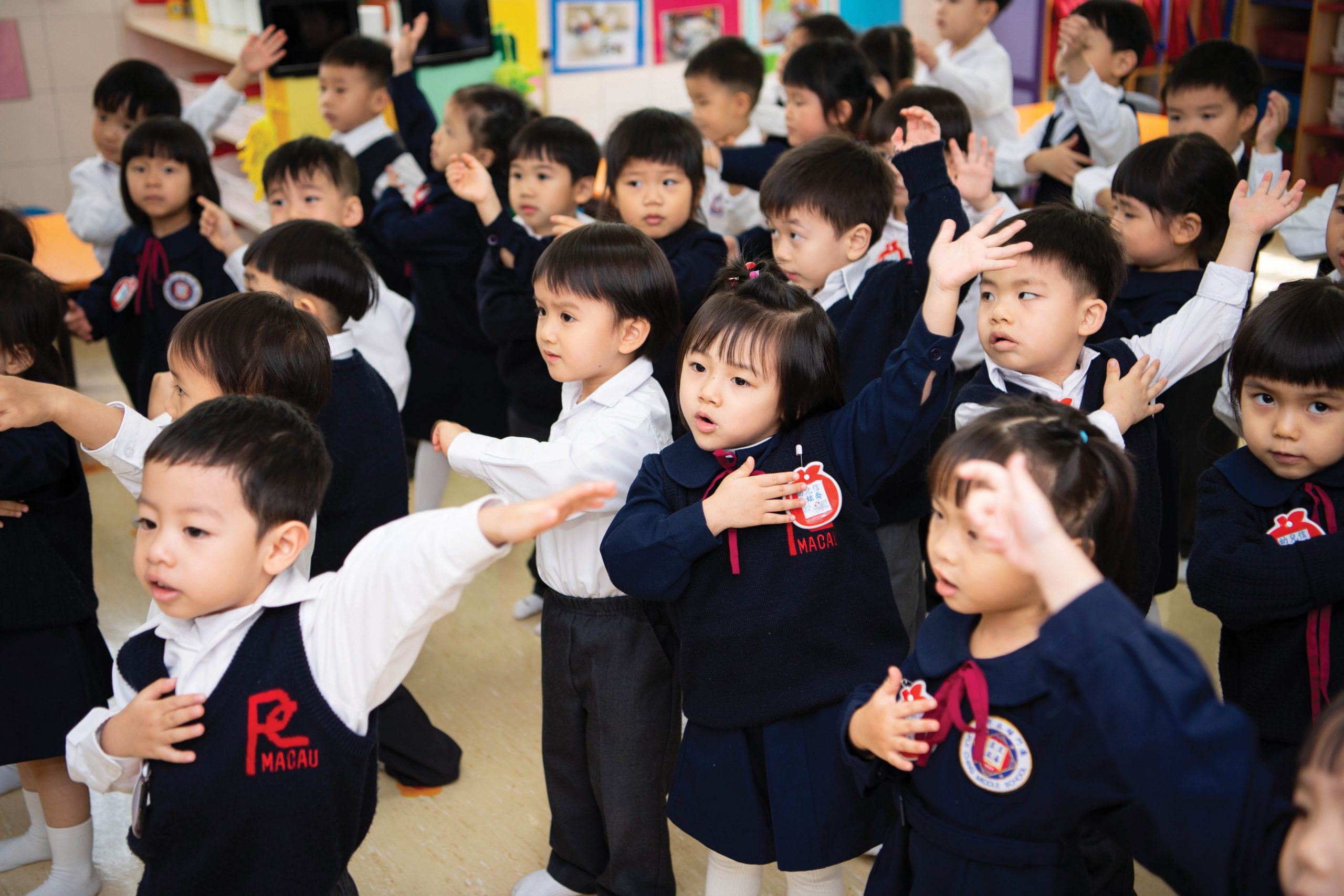
So, roughly, one in six people living in Macao is in some form of education. And, in recent years, these young learners have been excelling. In 2003, the city first participated in a worldwide study by the Organisation for Economic Co-operation and Development (OECD) which measures the educational performance of 15-year-old pupils every three years. This is called the Programme for International Student Assessment (PISA) and, over the years, Macao has been rising up the rankings. In the PISA’s most recent rankings – in 2018 – the SAR moved up to third place for all three of the assessment’s core subjects of maths, science and English reading. It was ranked behind China and Singapore and just ahead of Hong Kong in a list that includes the UK, the US, Japan and Portugal. According to the OECD, Macao showed not only high academic quality but also fast educational progress over the years in the past decade.
A key item that was discussed by Macao’s Chief Executive Ho Iat Seng in the government’s 2020 Policy Address in April was education. Ho said during the address that the government would optimise the structure of its education department, as well as optimising talent-cultivation policies while also strengthening education and youth services. He also said a patriotic education base would be set up in Macao and that the government would support teaching, scientific research and the applied use of research conducted by tertiary institutions. Even before he became the Chief Executive in December last year, Ho had been talking about positive change to the city’s education system. As he mentioned in August last year, Macao’s government spends at least MOP 1.5 million (US$188,000) on each student from when they enter school until graduating from university. This applies to all the students on Macao’s free education network, which exempts pupils from paying tuition fees for 15 years from the time they first start school. He also pointed out that a successful education should help students engage in different industries and think independently.
Following the policy address, the Secretary for Social Affairs and Culture, Elsie Ao Ieong U, said the government will reorganise the division of labour in the education department and will also merge the DSES and the DSEJ. She also said that the education department will be restructured and staffing will be ‘adjusted’, as well as the ‘management mechanics’ being ‘straightened out’. She said the new-look education department, which is expected to be reorganised in the future, will ‘promote the coordinated development of education according to future needs.” So the government is working on an even better future for the city’s education system but first, we need to go back to school to look at the present-day picture – and that starts at nursery.
Early learning
Macao’s youngest children learn to be independent early on. The city boasts a relatively low unemployment rate at 2.7 per cent, so most of the population is in employment. And many of these people have children. This means that the city needs a substantial amount of nurseries to support working parents during the daytime. Macao has 64 nurseries in total, including 41 that are subsidised by the government and managed by the Social Welfare Bureau (IAS).
The IAS says that nurseries play a major supporting role in the care of young children for families that are vulnerable or in crisis, such as ‘single parents, the disabled or those who are chronically ill’. Prices at subsided facilities can start as low as MOP 1,000 (US$125) for half-day services to MOP 4,800 (US$601) for full-day services per month. There are also some with no fee at all, save for MOP 100 (US$12.50) for meals. At non-subsidised nurseries, prices can be much higher depending on the place, running from MOP 2,400 (US$300) for half-day services to MOP 6,800 (US$852) for full-day services per month.
Children aged four or below are allowed to enrol in the nurseries, with government-subsidised nurseries prioritising Macao residents. If any of them have space after Macao residents have applied, though, then they will open up to non-resident children as well. Each nursery has its own enrolment requirements and parents are oftentimes waitlisted simply because of high demand. The IAS aims to stimulate the potential of the youngsters in these nurseries and develop ‘good living habits’. This ultimately prepares the children for life at any one of Macao’s kindergartens.
Education is compulsory in Macao between the ages of five and 15 years old. Similar to Hong Kong, kindergarten, primary and secondary education is normally combined in one single school. Some schools even include the nursery years under the same roof. There are a total of 77 schools in the city based on 2019/20 figures, three of which are international schools. There is also the new Escola Oficial de Seac Pai Van – in English, ‘Seac Pai Van Official School’ – a public school that will eventually cover kindergarten, primary and secondary ages. For the academic year we have just entered, the school only has seven classes from kindergarten to primary, with 193 pupils enrolled in total. According to its principal, Hon Iok, the school will also provide secondary education in the long-term and can accommodate up to 1,365 pupils. It opened in the first week of this month along with the rest of Macao’s schools.
Macao is a melting pot of many different education systems. There are schools running on purely Chinese curriculums, others with Portuguese as the main ‘medium of instruction’ and a handful of international schools that offer up an array of curricula. There are also those fully subsidised by the government, those partially subsidised by the government and those not subsidised at all by the government – in other words, private. Based on 2019/20 figures, there are 10 public schools in Macao and 67 private schools – 46 of which are part of the Macau Catholic Schools Association. Private schools are classified into two types: those that follow the local education system and those that follow non-local ones. Non-profit private schools that run the local education system model are allowed to enter the free education network. At present, 75.3 per cent of all the schools in the city come under the free education network.

Students with learning disabilities are well catered for in Macao. Based on data from 2019/20, 43 of the city’s schools – nine public and 34 private – provide an ‘inclusive education’ programme for special needs children. Another four schools – one public and three private – offer separate classes solely dedicated to special education.
With 15 years of free non-tertiary education available to locals since the 2007/08 academic year, Macao’s DSEJ director Lou Pak Sang points out that the government’s financial support for schools in Macao has continually grown, from paying for education in 85.4 per cent of all the city’s schools in the 1999/2000 academic year to 93.2 per cent of them in the 2019/20 academic year. The bureau has also made sure that teachers are well-equipped to handle their classes. Lou says that the proportion of formally educated teachers with a bachelor’s degree or higher has also increased from 53.2 per cent in the 1999/2000 academic year to 96.4 per cent in the 2019/20 academic year, while – over the same period of time – the proportion of those with a teaching certificate has increased from about 78 per cent to 97.5 per cent.
Further learning
When it comes to tertiary education in Macao, the landscape is a little easier to navigate. There are 10 higher education institutions in the city: the University of Macau (UM), the Macao Polytechnic Institute (MPI), the Macao Institute for Tourism Studies (IFTM), the Macau University of Science and Technology (MUST), the City University of Macau (CityU), the University of Saint Joseph (USJ), the Escola Superior das Forças de Segurança de Macau police academy (ESFSM), the Kiang Wu Nursing College of Macau (KWNC), the Macau Institute of Management (MIM) and the Macau Millennium College (MMC).
When it comes to subsidies for tertiary education students, every student in Macao needs to pay tuition fees at university, unless they have a scholarship or loan. But, for those who need financial aid, the government runs the ‘Learning Material Subsidy for Higher Education Students’ scheme during each academic year. Under this scheme, in the 2019/20 academic year, Macao students undertaking a degree or other higher education qualification for at least two years received MOP 3,300 (US$414) per year to ‘support students in the purchase of reference and learning materials’.
On top of that subsidy scheme, students can also get help with their tuition fees and other costs by applying to the ‘Continuing Education and Development Programme’. This is a scheme for any local resident aged 15 or over who undertakes any form of further education in the city, including university or even specialised classes like dancing or art. Anyone accepted under the scheme is entitled to MOP 6,000 (US$752) between this month and August 2023. According to the Secretary for Administration and Justice, André Cheong Weng Chon, the government has prepared a budget of MOP 800 million (US$100 million) to cover the entire scheme.
A bright future
So, in a nutshell, that’s how Macao’s education system stands at present. But what about the future? According to the DSEJ, the bureau is focusing its efforts on kindergarten, primary and secondary students’ futures, especially with regards to ‘emphasising the balance of affection, attitudes and values, as well as the cultivation of knowledge and skills in the new era’, according to Lou. Lou also shares that there are four key points the bureau will focus on in education. First, it intends to ‘cultivate patriotic love’ while ‘nurturing’ the city’s ‘place internationally’. The second point Lou outlines is to ‘develop students’ soft skills’. The third point is to enhance the happiness and satisfaction of students and the fourth point is to strengthen education pertaining to creativity and technology.
To achieve these goals, Lou says that the bureau will ensure funding continues for the education system while also assessing and equipping teaching staff with up-to-date training. As the education authority has included in its outlined plans for higher education, the government will ‘provide assistance in research policies or resources’, ‘support colleges and universities in constructing technological innovation’ and ‘further promote the work of local higher institutions in co-operation with industry, learning and research’.
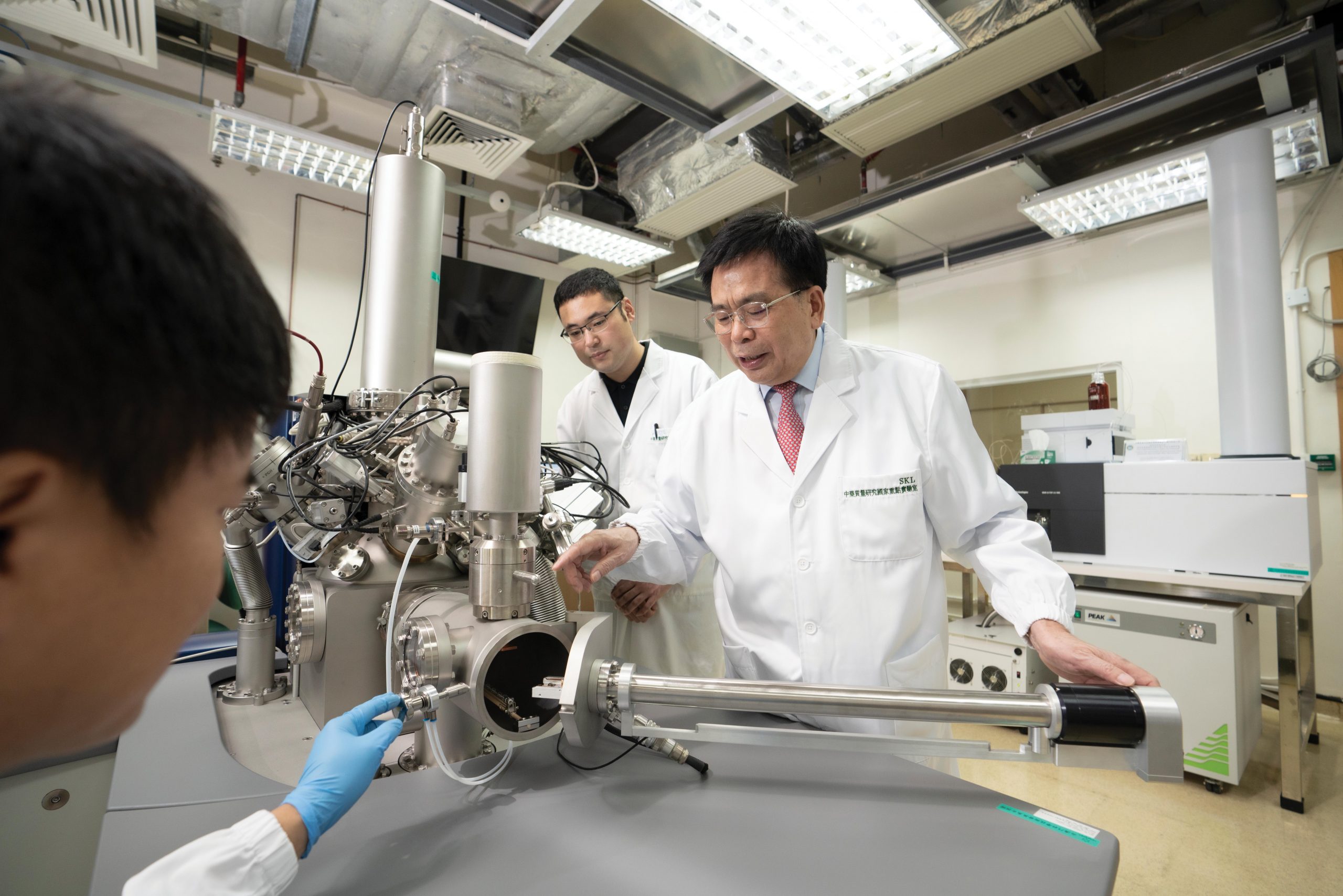
Chair Professor Liu Liang is the MUST president as well as an academician of the Chinese Academy of Engineering. He says: “The purpose of education is cultivating the new generation and their talents as professionals for the community.” Based on a strategic policy implemented in 2013 – the year Liu became the president of MUST – the institution has made sure teaching and research are of ‘equal importance to one another’ to create quality results, he says. Liu also says that ‘students with a positive attitude toward learning’ also contribute to the ‘research quality’ of the city as ‘not only are they trained to serve society once they leave, but they are also vital in research manpower thanks to their youthful energy and creativity, as well as their productivity’. “The academic team together with the students drives the university forward,” he adds.
“Even if Macao is small,” continues Liu, “and our two State Key Laboratories [SKLs] have less than 400 team members across both – comparatively smaller than some research teams in China – our university’s research publication numbers are much higher, particularly in high-quality publications.” He adds that the students alongside the academic staff at MUST have produced more than 200 research patents over the past year. He says: “We can show the international community that we also do research [at MUST] and help improve Macao’s academic reputation.”
For the future of MUST – and the entire tertiary education system in Macao – Liu highlights the importance of ‘creativity, quality, innovation, multidisciplinary learning and collaboration’ in cultivating an environment rich in knowledge. He also highlights that MUST has two SKLs – important state laboratories that focus on key research for China – and that this is a great advantage to the city. The SKL of Quality Research in Chinese Medicines and the SKL of Lunar and Planetary Sciences are both based at MUST. Liu says he’s ‘very happy’ with the ‘knowledge sharing’ between MUST and the ‘postdoctoral fellows from overseas’ who take part in research at the SKLs. He also points out that research and economic growth are connected. “By researching and creating new technology, we create new industries,” he says, citing the research and development of mobile phones that has led to an industry that’s widely popular today. “Research happens before industry,” he says. “This is why we emphasise innovative research, which can lead to new industries and help with economic growth.”
Across the GBA
As the Greater Bay Area becomes more connected over the coming years, so will its universities and places of higher education. This includes the University of Macau (UM), which aims to be in the thick of it all for research and collaborative programmes. Rector of the UM and an electrical engineer, Song Yonghua, tells us that the UM last year launched ‘the first GBA industry-academy collaboration base’ – where students and faculty members co-operate with businesses for research projects – called the Zhuhai UM Science and Technology Research Institute (ZUMRI), on Hengqin Island alongside its main campus. This institute, set up in partnership with the Zhuhai Hengqin New Area Management Committee, already has three of the university’s SKLs based there.
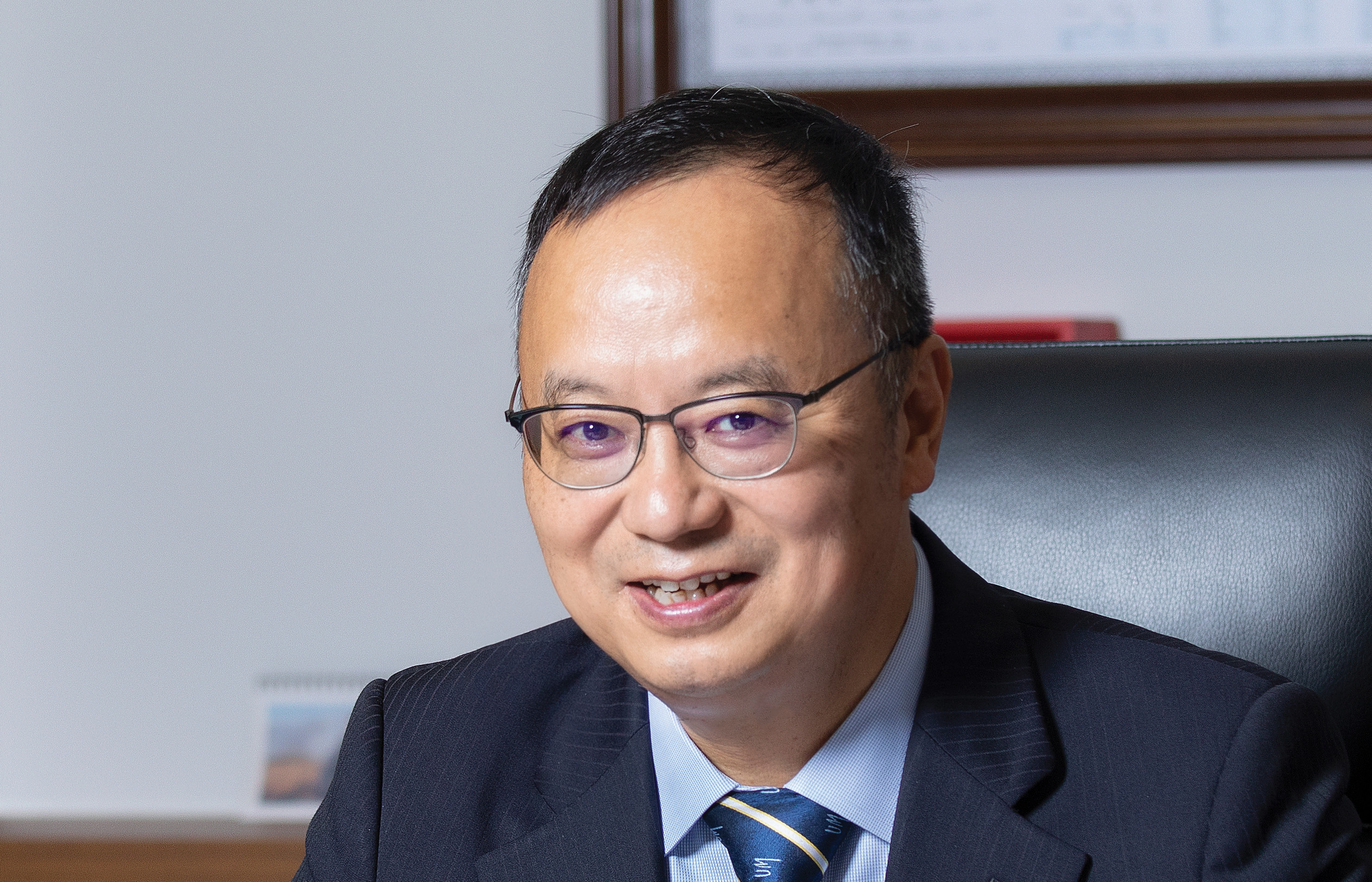
Song Yonghua | Photo Courtesy of UM
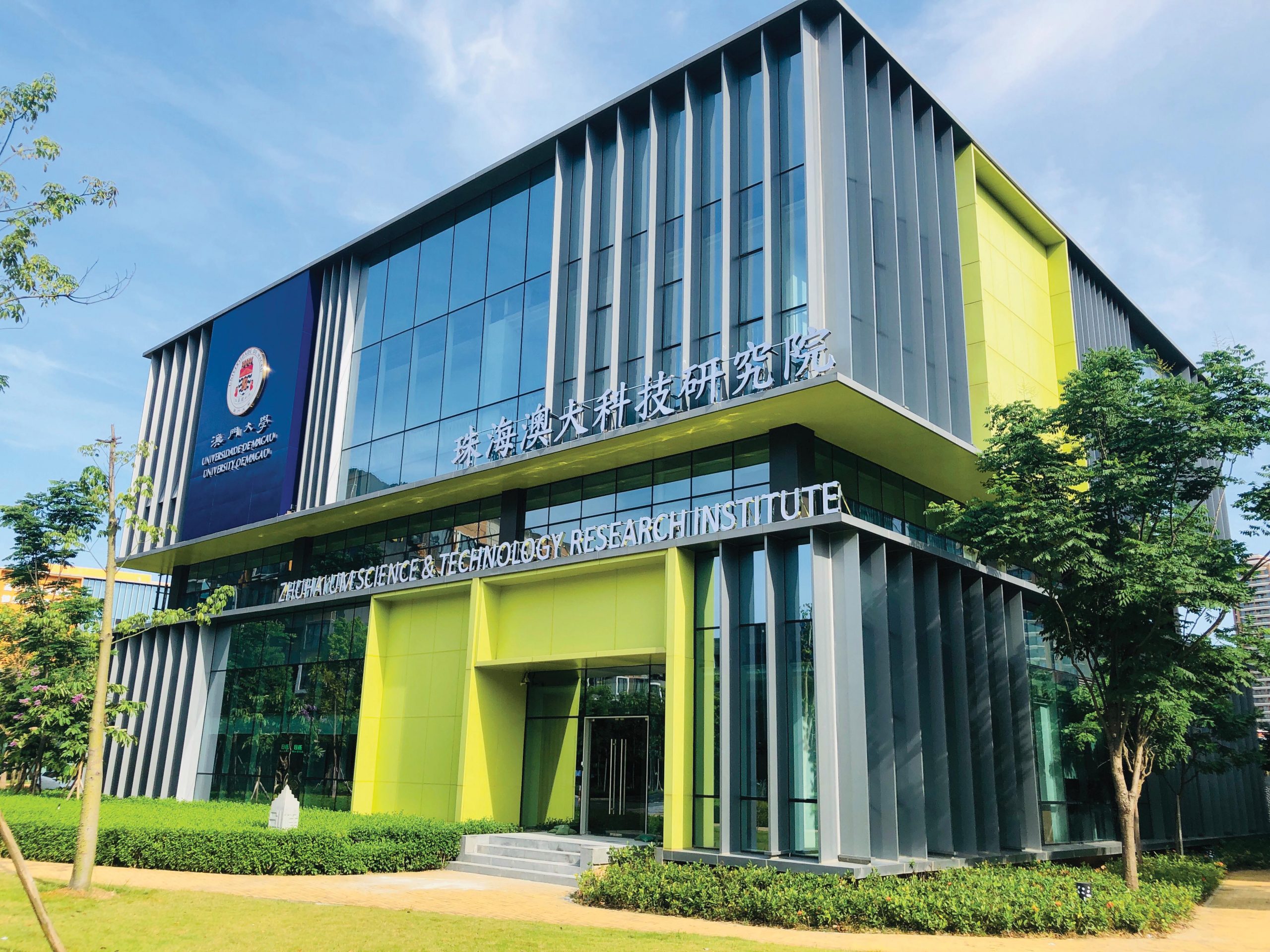
According to Song, ZUMRI, over the coming years, will establish five major research and development (R&D) centres, as well as advanced training centres across a variety of fields – namely microelectronics, traditional Chinese medicine, smart city technology, translational medicine and advanced materials. He says: “These centres will introduce R&D projects from the UM with good prospects for industrial application.” Song also says the ZUMRI will ‘connect the university’s scientific research team with the high-quality scientific and technological innovation elements of the Greater Bay Area in order to create innovative products with high added value and technical services’ for the GBA. He adds that future plans include expanding the base into a 10,000-square-metre ‘platform’ for ‘technological innovation’ between Macao and the Mainland.
The UM has also been collaborating with Beijing’s Chinese Academy of Sciences (CAS). Together they have established five laboratories in the fields of brain and cognitive sciences, artificial intelligence and robotics, spatial information, marine environment and ocean engineering, and cancer research. “In the future,” says Song, “CAS and the UM will establish an institute for technological innovation in Macao to strengthen the training of innovative talent and contribute to society.” Also, the team at the university’s Natural Language Processing and Portuguese-Chinese Machine Translation Laboratory (NLP2CT) have created technology for language translation, including an online Chinese-Portuguese-English computer-aided translation platform called UM-CAT and a system that translates between Cantonese and Mandarin in, as Song puts it, ‘a bid to strengthen Macao’s position within the GBA’.

Another important higher education establishment in Macao is the USJ, which belongs to a large network of Catholic universities worldwide and is uniquely positioned as being the only private Catholic university in China. USJ rector Stephen Morgan says the university teaches an ‘English medium’, allowing students to experience a ‘Western university’ mode of education that’s focused on ‘humanities, arts and social sciences’. “We have a very clear view of what our graduates will be like,” he says. “They should possess high integrity and be able to think creatively, critically and collaboratively.”
The USJ rector says that each of the higher education institutions in Macao brings something different to the table. “What we have are different perspectives from different backgrounds and that leads to synergy,” he says. He adds that, in the future, the university will focus on more arts, humanities, social sciences and science research work, plus more work in nature conservation and preserving the mangroves in Macao. Further to this, the Secretary for Social Affairs and Culture, Elsie Ao Ieong U, attended the USJ’s 2019/20 graduation ceremony, where she mentioned the institution’s important role for its ‘nearness’ to Portuguese-speaking countries (PSCs) which has been achieved through ‘great efforts to promote secular co-operation’ between China and the PSCs.
Another educational focus for the future in Macao is in the medical field. MUST revamped its Faculty of Health Sciences last year – changing its name to the Faculty of Medicine – but it’s not the only tertiary institution looking at the future of the health sector. Founded in 1923, the private the Kiang Wu Nursing College of Macau (KWNC) provides its students with nursing experiences outside the classroom setting. The instructors supervise them and the whole teaching system gives the students an edge as they are trained first-hand to take care of patients. Associate Professor Alice Tsang Sau Mui, the academic vice-president at the KWNC, says this is an important aspect of any nursing student’s training as they must be able to have confidence when they make their rounds as professional nurses and contribute to society.
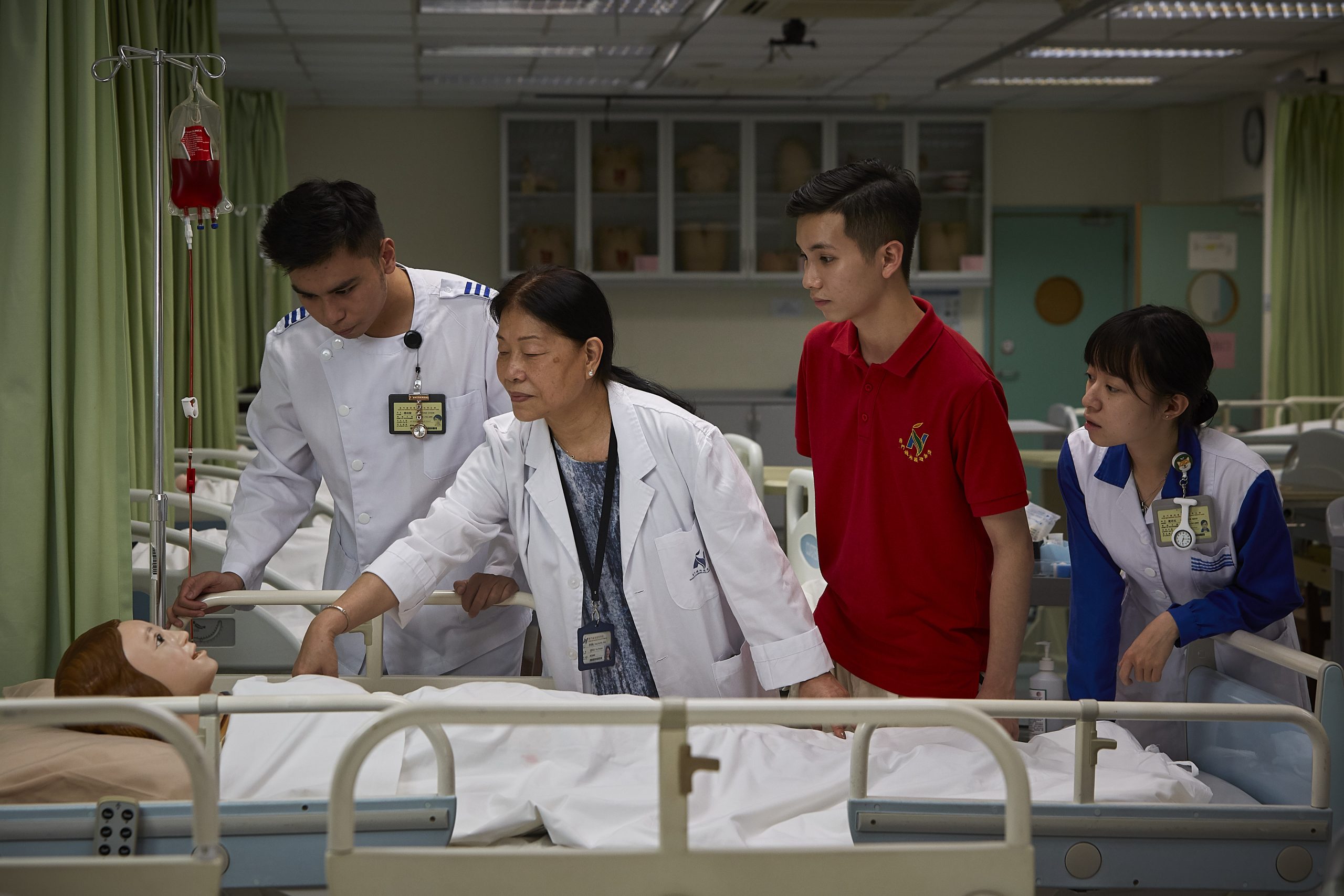
“Nursing manpower is in shortage globally, no matter where you are,” says Tsang, with the global pandemic in mind. As healthcare services expand in Macao in the future, she also states that one of the KWNC’s missions is to prepare more nurses to fill any gaps created in manpower. At the same time, she says that the university also needs to make sure that enough new nurses graduate every year and then go into Macao’s existing healthcare system.
In December 2018, the KWNC began a master’s course in nursing. While the institution’s yearly intake of nursing students is 80 to 90 people, Tsang says it can be challenging to find enough appropriate candidates for their four-year master’s course. She says that while the current public healthcare ‘nurse to patient ratio’ in Macao is ‘deemed adequate’ at four nurses to 1,000 patients, the possibility of new healthcare facilities in the city in the future ‘could lead to a nursing shortage’. However, Tsang believes the health bureau has ‘plans to take care of this along the way’. She also believes in the quality of the KWNC’s students. “We have a motto that says ‘from personal to benevolence’,” she says, meaning that graduates are instilled with the values of being caring, patient and loving throughout their four years at the KWNC.
“We’re planning to start more programmes not only for nurses but also for other healthcare professionals,” says Tsang. While the KWNC already has a postgraduate certificate course in applied gerontology – the study of old age and the problems associated with it – upgrading it to a master’s programme, says Tsang, would allow the institution to prepare more healthcare professionals in different disciplines to serve the elderly, from physiotherapists and social workers to doctors and teachers. She further explains that the elderly population in Macao is increasing and preparing professionals for their care is important.
Teaching tourism

Moving away from health to tourism, the public Macao Institute for Tourism Studies (IFTM) offers degrees in heritage, tourism and hospitality. With regards to the future, it is collaborating with the World Tourism Organisation (UNWTO), a United Nations agency that’s responsible for the promotion of sustainable and universally accessible tourism, in training tourism officials and professionals for UNWTO member states – covering most of the globe. IFTM president Fanny Vong says the partnership ‘will further enhance IFTM’s international status’.
Vong says the IFTM has established a base in Hengqin – the island in neighbouring Zhuhai which Chief Executive Ho Iat Seng has said will be a prominent platform for Macao to play an active part in the GBA – adding that the IFTM ‘has been entrusted by the Macao SAR government to be responsible for working with other stakeholders to develop Macao into the Greater Bay Area’s tourism education and training base’. Also in relation to the GBA – which encompasses nine cities in China along with the Macao and Hong Kong SARs – the KWNC is strengthening its ties. Student nurses at the college already have the opportunity to study Traditional Chinese Medicine (TCM) and can gain knowledge in TCM nursing if they choose to do so but Tsang tells us that the KWNC has partnered with the Guangzhou University of Chinese Medicine, giving an opportunity for students to experience the university hospital attached to it. Guangzhou is one of the cities in the GBA and Tsang says this partnership ‘opens up an avenue for a single semester exchange programme’ which would see students from Macao studying in Guangzhou and vice-versa. She adds that this ‘could just be the start of these sorts of educational exchanges across the GBA in the future’.
The Hengqin base launched last year was a milestone for IFTM as a new platform for tourism education training in the GBA, as well as to advance co-operation between various parties.
Whether it’s more partnerships within the GBA, more student nurses in Macao or more developments for Portuguese language learners, it’s clear that the city has plenty of plans to improve its already strong educational system in the future. As for primary and secondary education – whether private or public, Chinese or English – Macao’s schools will continue to prepare pupils for further education and the world at large, particularly with the free education network that will continue to help subsidise those pupils who need it. As for the future for higher education, the government’s education authority has outlined that it will ‘support local institutions integrating with the development of GBA’, ‘promote co-operation between local and Mainland institutions’, ‘encourage and support local higher education institutions to strengthen foreign co-operation’, ‘offer diversified higher education courses’, ‘promote student mobility’ and ‘broaden their horizons’, as well as actively promoting tourism-related courses to ‘cultivate tourism professionals’ in the future.
Lou concludes that the education system in the city will train a new era of ‘law-abiding and ethical citizens who possess creativity, innovation, a healthy life and artistic aesthetics’. Considering the city’s strides in education over past years, coupled with its ambitious plans for the future that are already in place, Macao could one day be known on an international scale not just for its tourism, history, heritage and gaming establishments – it could one day be an influential educational hub at the heart of the GBA.
Fast facts
We’ve done our homework: a few interesting facts on education in Macao.
Government subsidies: Since the 2009/10 academic year, the government has financially aided Macao primary or secondary pupils who meet certain ‘requirements’. This month, in time for the 2020/21 academic year, it has increased its financial aid to cover schooling costs…
The government now provides annual tuition assistance for temporary and permanent Macao residents up to a maximum of…
- MOP 4,000 (US$501) per kindergarten (infant) and primary pupil
- MOP 6,000 (US$752) per junior secondary – which covers grades seven, eight and nine – pupil
- MOP 9,000 (US$1,128) per high school student
The government now, for ‘school supplies’, also subsidises…
- MOP 2,400 (US$301) per kindergarten (infant) pupil
- MOP 3,000 (US$376) per primary pupil
- MOP 3,550 (US$445) per junior secondary and high school student
All pupils are also able to receive: MOP 3,950 (US$495) for school meals.
Higher education student numbers: All based on figures from the 2019/20 academic year…

Jobs for the students: Here are the top five industries that Macao’s university and college graduates work in within a year, according to DSES figures for last year…

Excelling overseas
Students from Macao study at some of the best universities in the world. Using the government education authority’s data for the 2018/19 academic year, here’s a table showing how many students from the city are at 15 of the globe’s most prestigious universities, as ranked by the Quacquarelli Symonds (QS) World University Rankings…
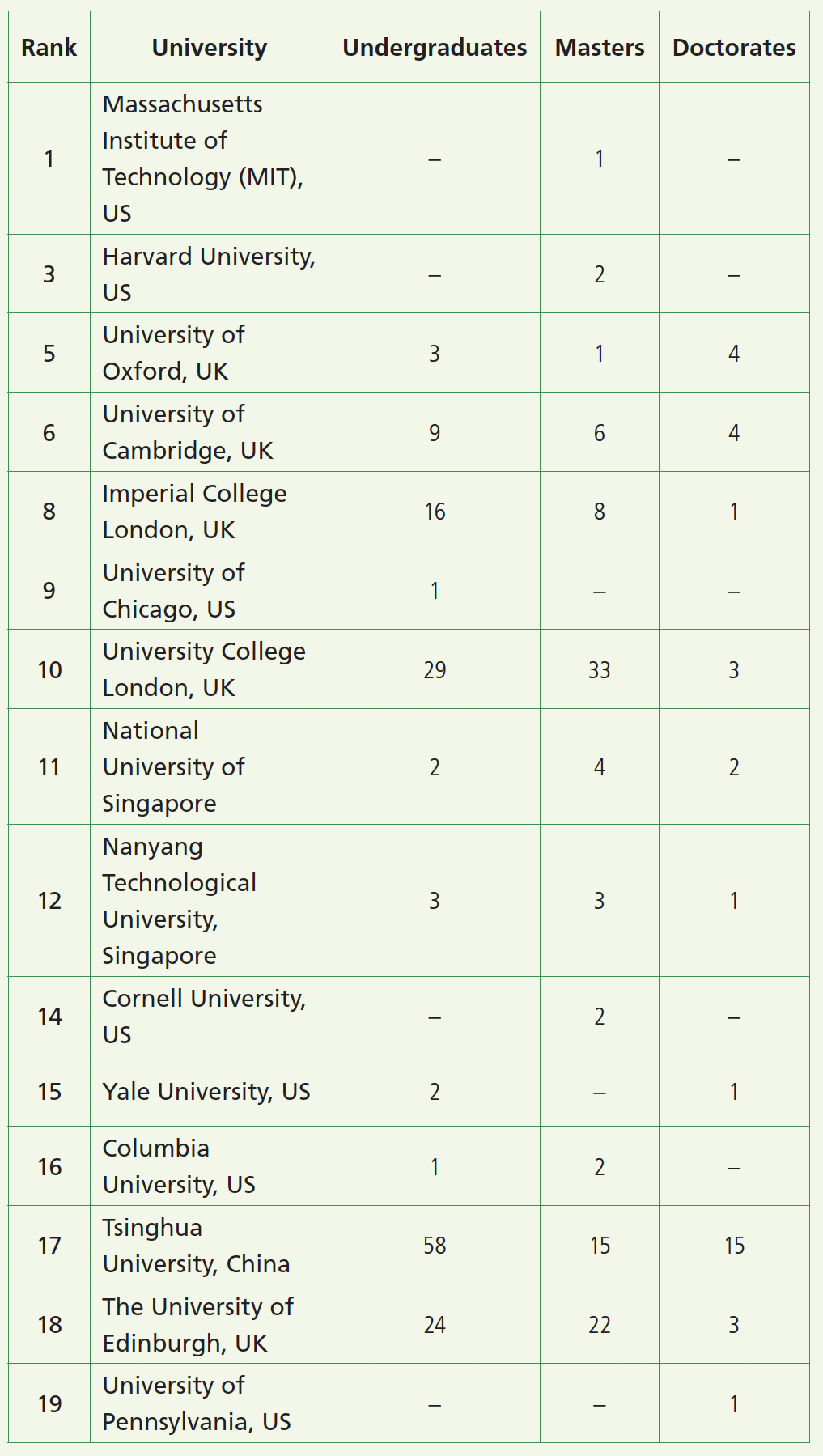
Know your university
Name: University of Macau (UM)
Founded: 1981 as the UEA, 1991 as the UM
Based: Main campus is on Hengqin Island
Formerly known as the privately owned University of East Asia (UEA), it was established in 1981, catering to a Hong Kong student majority. It was renamed the University of Macau in 1991, becoming Macao’s first public university. It moved to Hengqin in 2014. There were 10,974 students enrolled at the UM in the 2019/20 academic year across seven faculties – Arts and Humanities, Business Administration, Education, Health Sciences, Law, Science and Technology, and Social Sciences. The university was ranked in the 301-350th place bracket on the new Times Higher Education World University Rankings 2021.
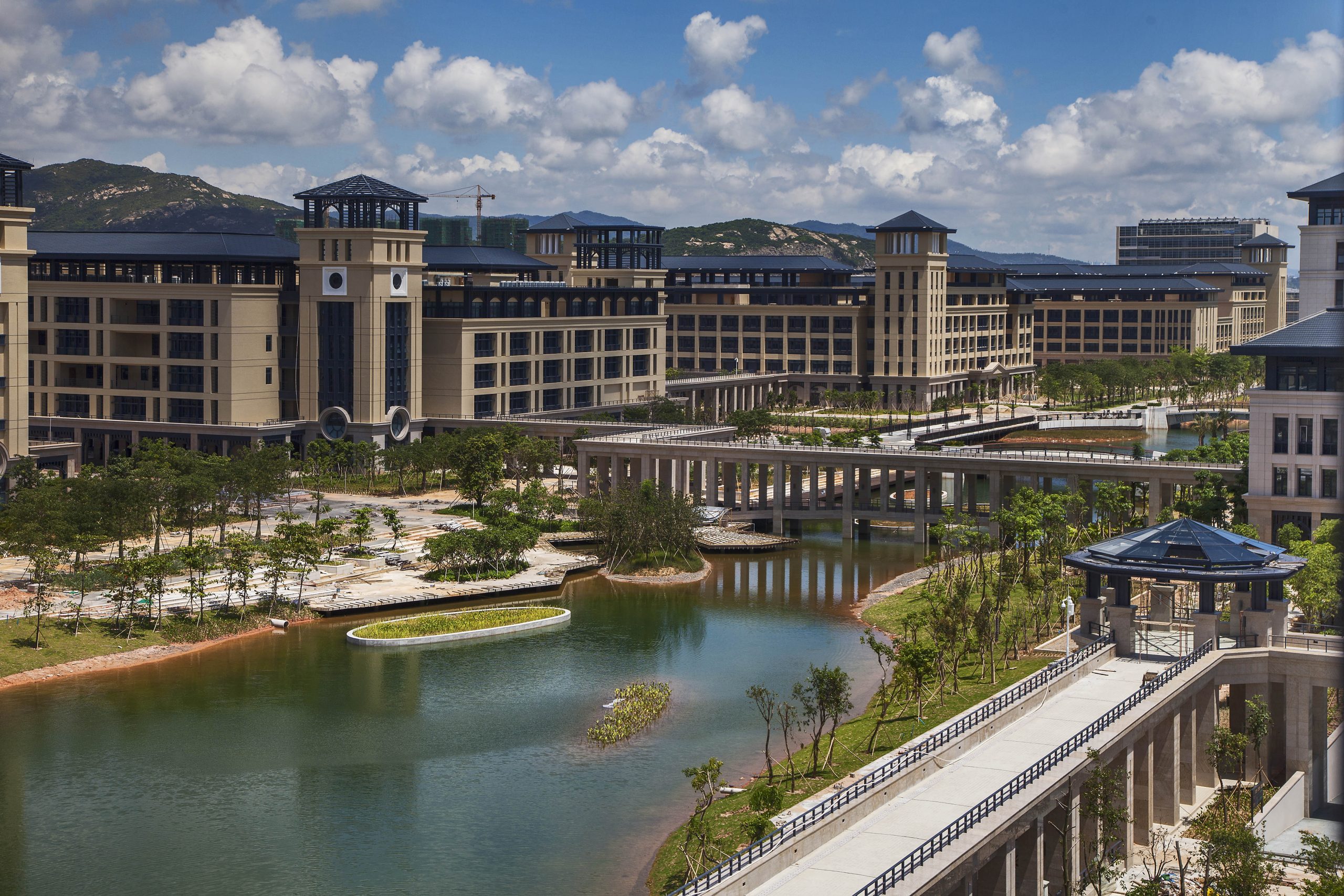
Name: Macau University of Science and Technology (MUST)
Founded: 2000
Based: On the edge of the Cotai Strip, Taipa
MUST, sitting right next to Macau International Airport, is the largest university in terms of students in Macao. It boasts 11 faculties and departments – the Faculty of Information Technology, School of Business, Faculty of Law, Faculty of Chinese Medicine, Faculty of Hospitality and Tourism Management, Faculty of Humanities and Arts, Faculty of Medicine, School of Pharmacy, University International College, School of Liberal Arts and Department of General Education. In the 2019/20 academic year, there were 12,131 students enrolled at MUST. It was ranked in the 251–300th place bracket on the Times Higher Education World University Rankings 2021.
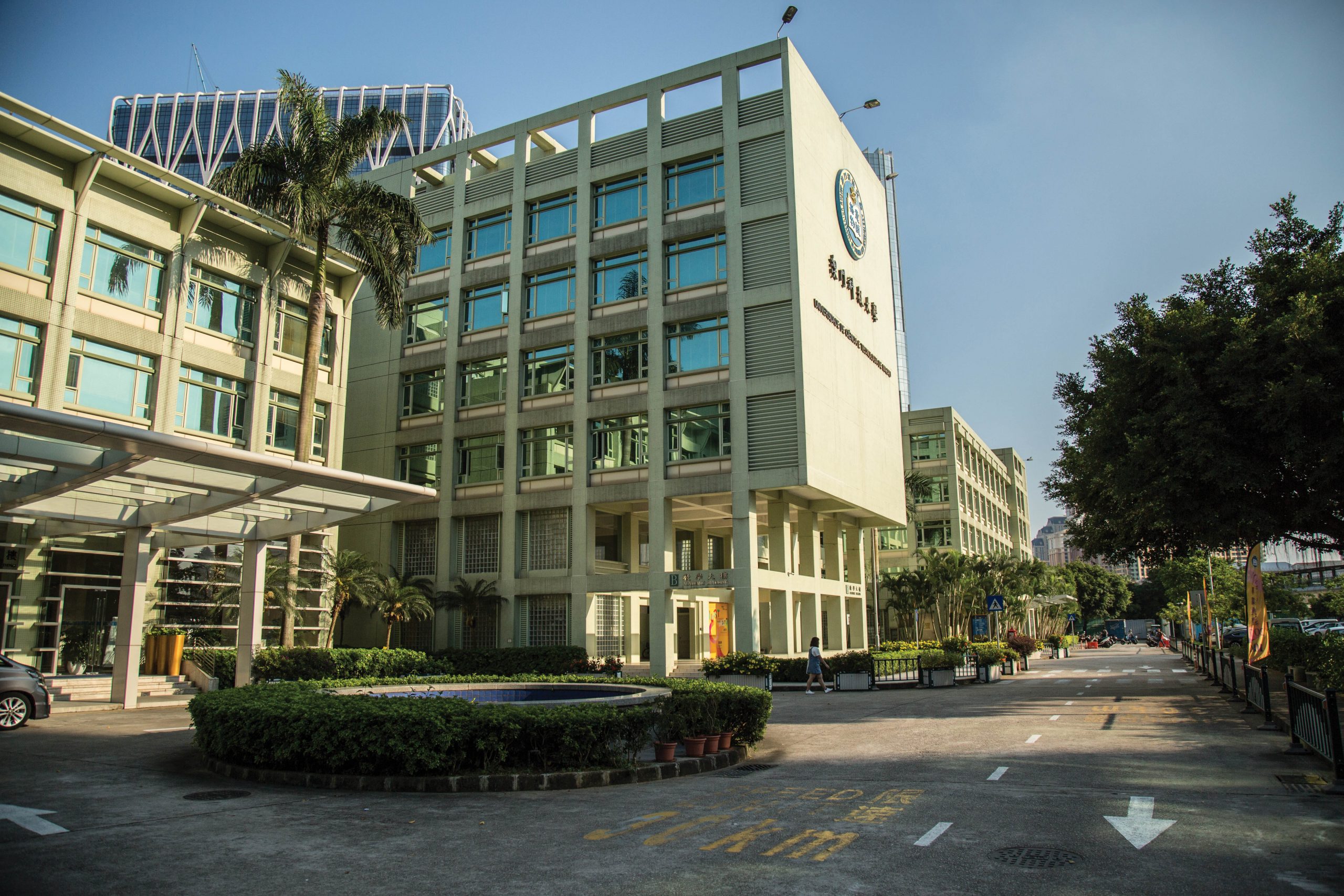
Name: Macao Polytechnic Institute (IPM)
Founded: 1991
Based: Opposite Lotus Square on the Macao peninsula
Originally a polytechnic college under the privately owned UEA, it split away and was established as the IPM in 1991, becoming an independent higher education institution. A total of 3,515 students were enrolled in the 2019/20 academic year across its School of Arts, School of Applied Sciences, School of Business, School of Humanities and Social Sciences, School of Health Sciences and Sports, and School of Languages and Translation.

Name: University of Saint Joseph (USJ)
Founded: 1996
Based: In the north of Macao, next to the China border
Founded in 1996 as the Macau Inter-University Institute, the USJ was then renamed to its present moniker in 2009. It may officially be only 24 years old but it actually evolved out of the historic St Joseph’s Seminary, which dates back to 1728. It’s the only private Catholic university in Macao. In September 2017, its main campus moved to Ilha Verde but the Faculty of Religious Studies and Philosophy still sits on the ancient seminary site in St Lawrence parish. In the 2019/20 academic year, there were 1,228 enrollees across the USJ’s five faculties – the Faculty of Social Sciences and Education, Faculty of Arts and Humanities, Faculty of Business and Law, Faculty of Religious Studies and Philosophy, and the Institute of Science and Environment.
